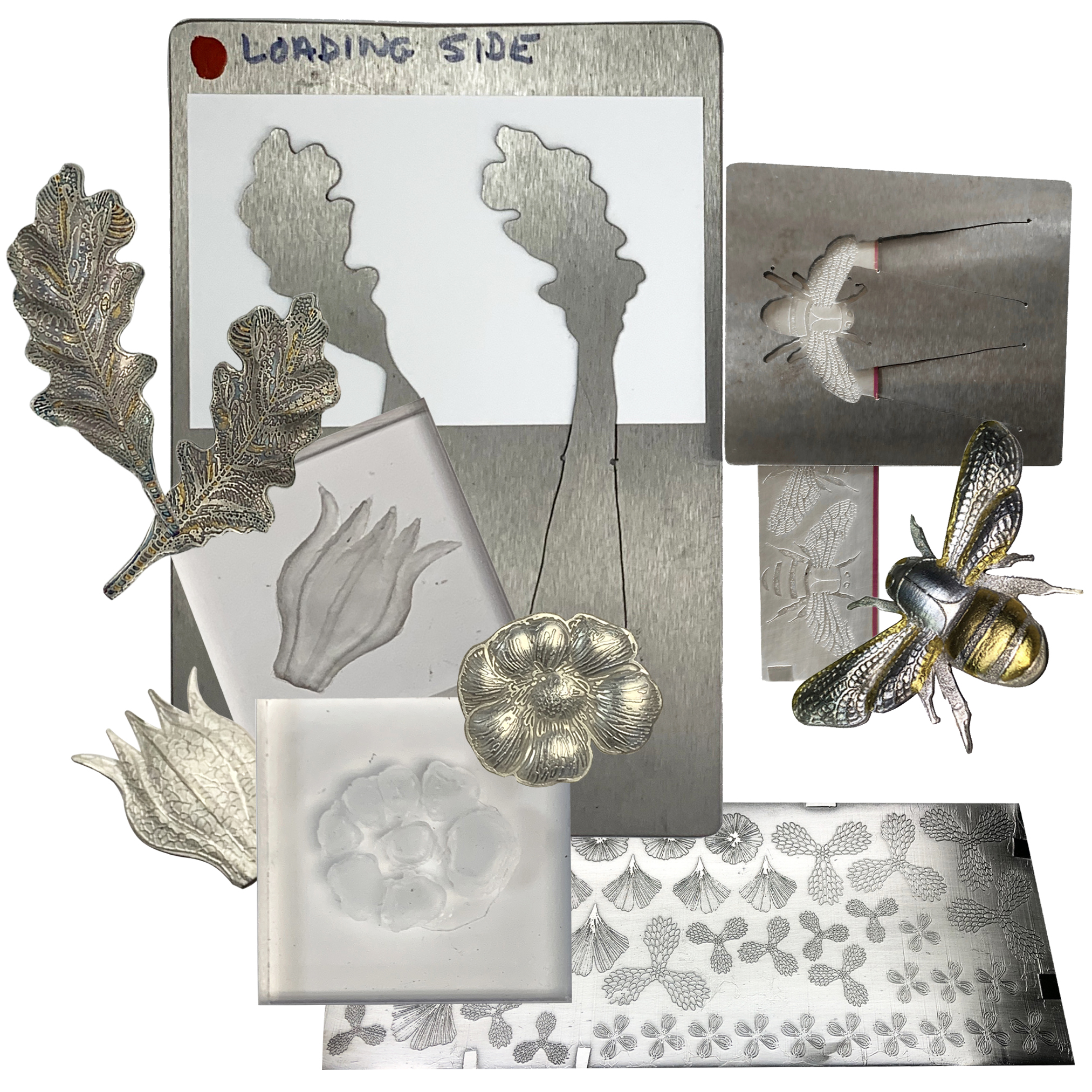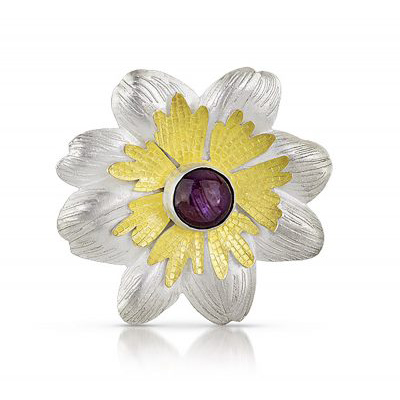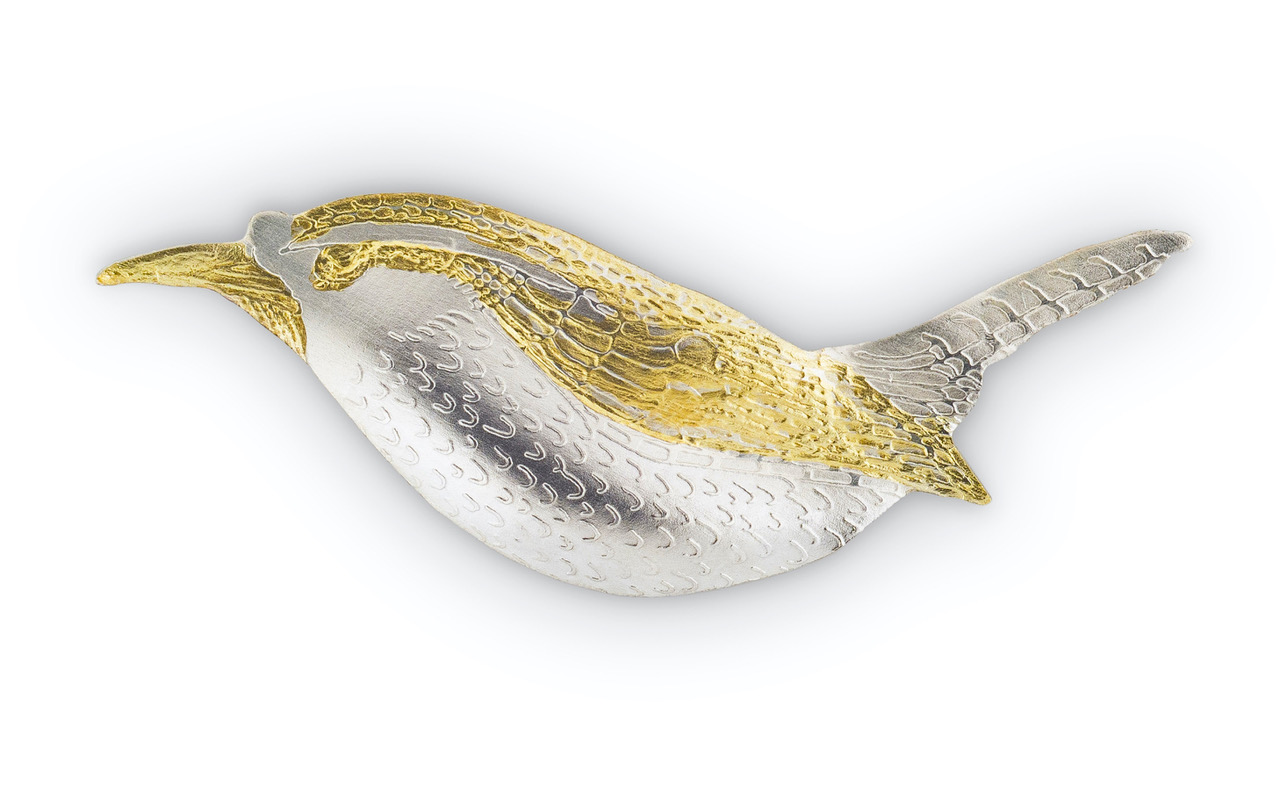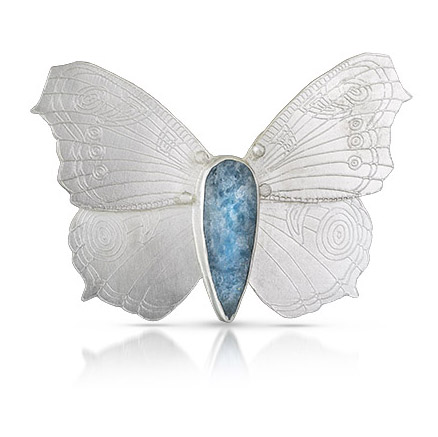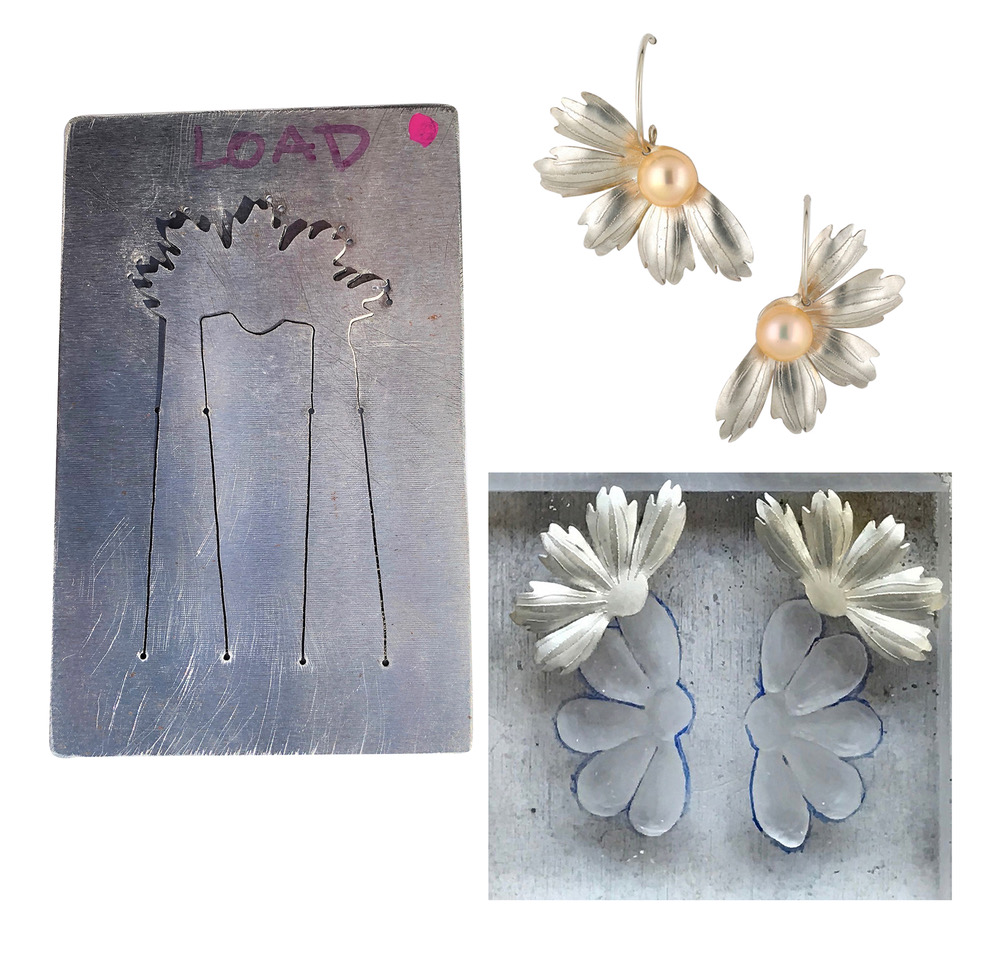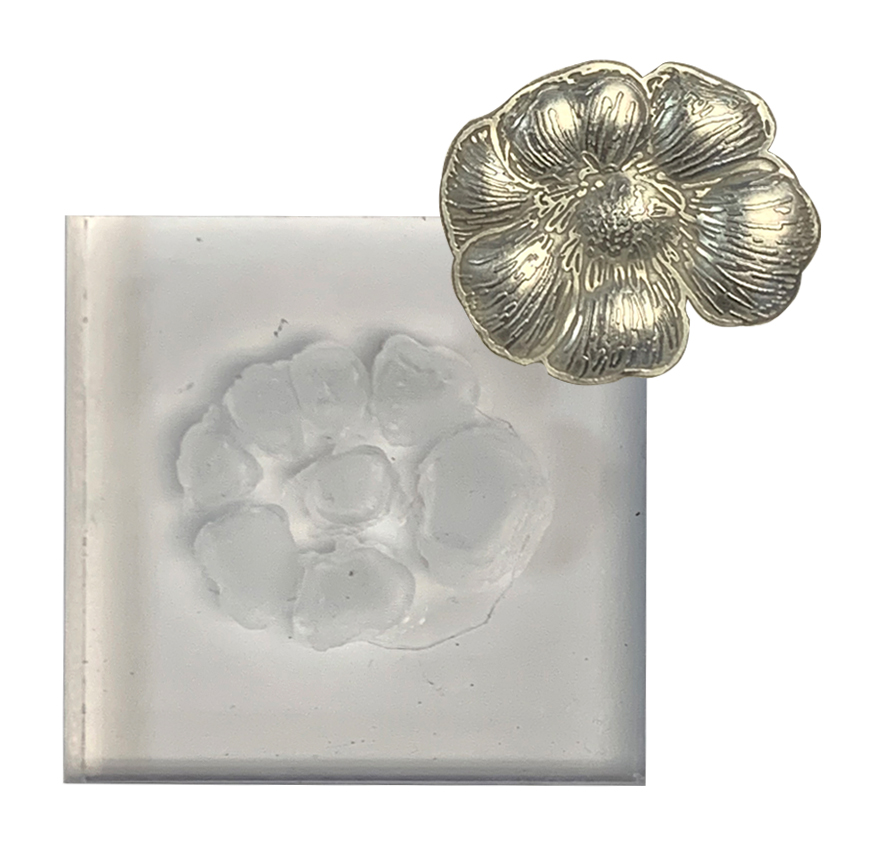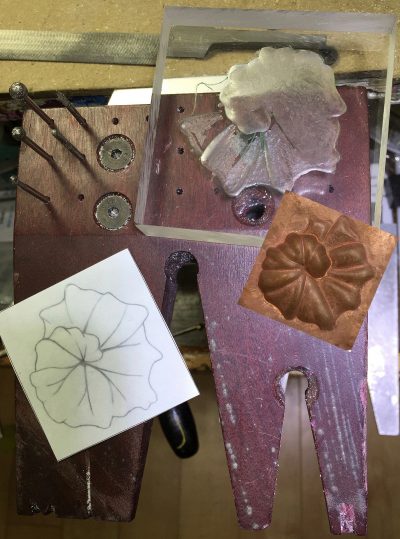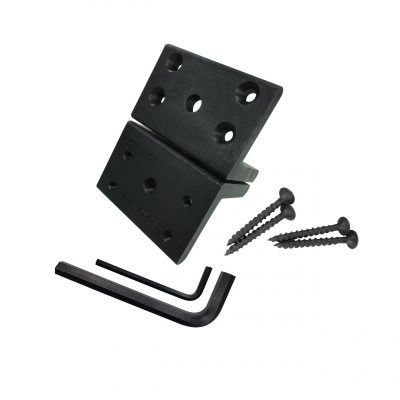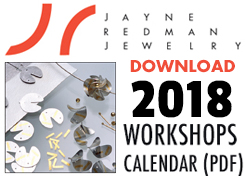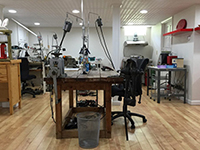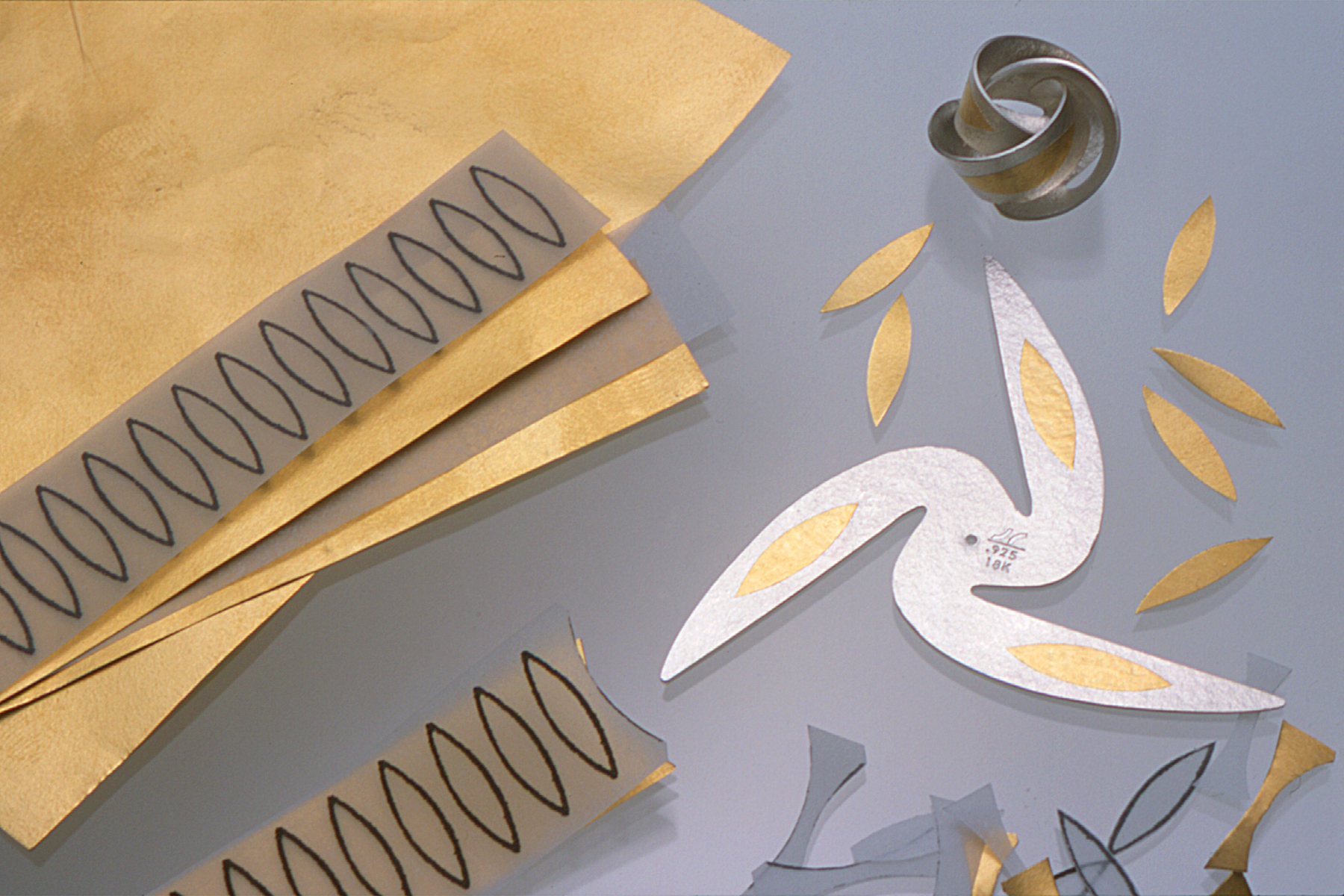Register at Silvera Jewelry School
Elizabeth Lyne is inspired by graceful forms and patterns in nature – soft lines and swirls of feathers and fur, flower petals and butterfly wings. She has brought those impressions to her jewelry by expanding on methods of etching to create a unique process. She is able to control and duplicate her results to provide deep texture and detail to make her jewelry come alive.
Jayne Redman is known for her unusual way of working with metal in three dimensions, often using multiples of the same shape to convey a single idea. Using nature as her inspiration she considers combinations of form and function, integrating mechanics with design and applying innovative engineering methods. She has perfected the process of quickly duplicating shapes by cutting them out with blanking dies and then forming those shapes with tools and jigs of her invention.
Jayne and Elizabeth have combined their knowledge in this workshop.
Part One – Etching: Students will learn how to transform their own drawings, photos, or imagery from copyright-free sources, into high contrast, black & white images that are ideal for etching. We will be utilizing a scanner, a computer with image editing software (instructions for Windows & Mac computers will be provided), and a laser printer to prepare the images. Students will also receive instruction on how to create images manually using oil-based pens. They will then etch their images onto silver using an electro-etching process with cupric nitrate.
Part Two – Forming: Students will use die forming techniques to give their shapes dimension and to quickly cut them out after forming.
- Silhouette dies allow you to make rounded relief forms in metal. You will be sawing out a shape in the middle of a sheet of cast acrylic and pressing metal into the resulting cavity. Turning the die over and pressing from the opposite side will result in a mirror image. The addition of molding in thermal reactive plastic creates quick contour and variation in your relief forms.
- Carving contour, or non-conforming, dies in thick cast acrylic allows for complexity and detail. You will carve reverse relief shapes with specialized burs and a flex shaft, then press metal into the die to duplicate your carving.
- Self-registering, one piece blanking dies give you the ability to quickly cut out the shapes you conceive. Whether you are working with die formed pieces or flat sheet that is used for another process, you will be amazed at how easily you can go from original idea to duplicated shape as you make and use your own dies during class.
Additional information
| Student Supplies | Black sharpie markers in a variety of widths |
|---|
